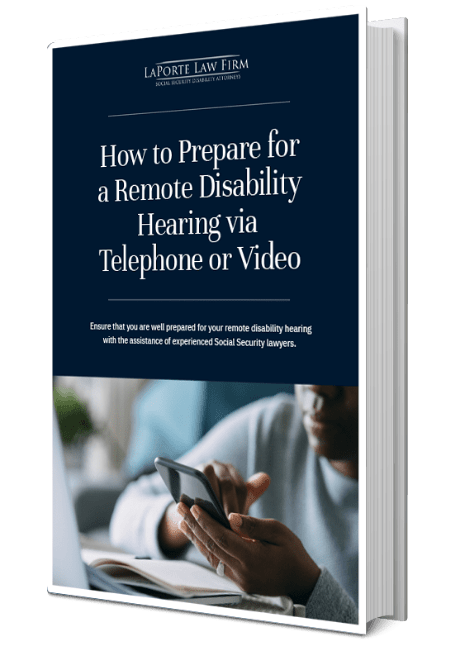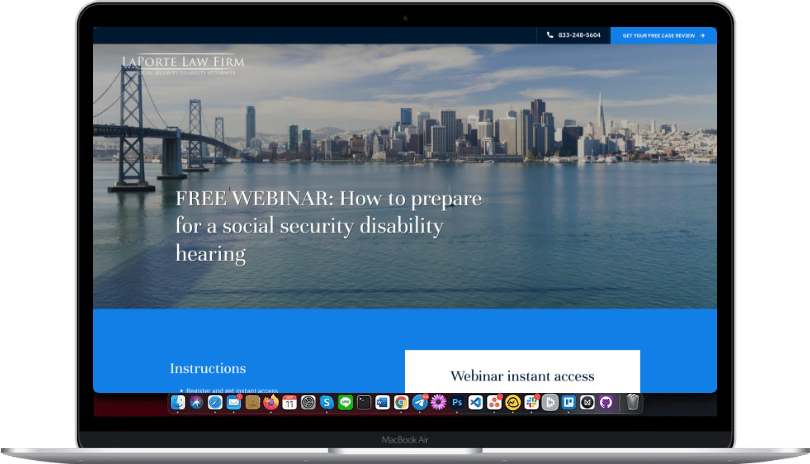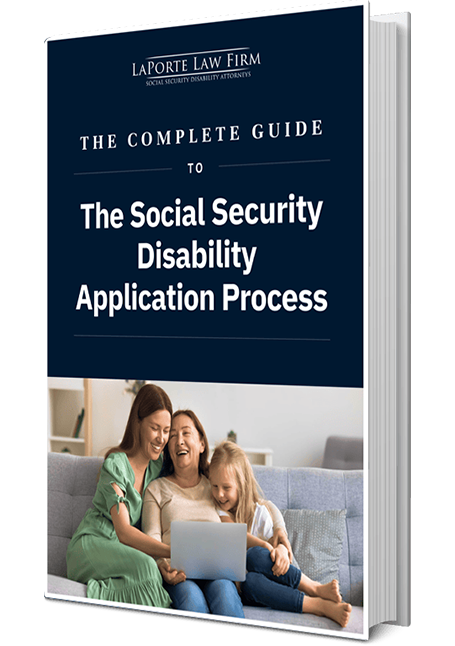
What Is SSDI?
SSDI, or Social Security Disability Insurance, provides monthly benefit assistance to people with disabilities. The Social Security Administration (SSA) manages the SSDI program and pays benefits to disabled people who have a qualifying work history.
To be qualified for SSDI benefits, you must have a medical condition that meets Social Security’s definition of disability and have worked in jobs covered by Social Security. Social Security work credits are based on your yearly wages. You can earn up to four credits each year. To qualify for SSDI, generally, you need 40 credits, 20 of which were earned in the last 10 years immediately before your disability began.
When a worker dies, their surviving spouse or surviving divorced spouse may also be eligible for benefits if they are between age 50 and 60 and their disability started before or within seven years of the worker’s death.
The Social Security Disability process can be difficult to navigate. If you have a question about your case, please give our office a call for a free consultation.
What Is the Social Security 5-Year Rule?
The Social Security Administration encourages disabled people to return to work. If you receive SSDI benefits, you may return to work for a period of time and still receive your benefits.
Trial work period
People on SSDI benefits can return to work and still be considered disabled. This period is called the trial work period. During the trial work period, the Social Security Administration will not cut off benefits if you have worked for any nine months during a five-year window. You can work and earn any level of income during these nine months and still receive your SSDI benefits.
The Social Security Administration determines that you are working a trial work month if you earn a certain amount per month. In 2023, any month in which you are earning at least $1,050 is considered a trial work month.
If you work for more than nine months during a five-year window, you will have used all of the trial work months and the trial work period will end.
Extended period of eligibility
After your trial work period ends, you become eligible for a 36-month extended period of eligibility. During this extended period, the Social Security Administration will continue to evaluate your work and earnings. These earnings are based upon the substantial gainful activity (SGA) levels. If you are earning more than a certain amount of income per month, then you are engaged in substantial gainful activity. The SSA uses earning guidelines to evaluate whether your work activity is at a substantial gainful activity level. These guidelines can change each year. In 2022, the SGA amount for non-blind individuals was $1,470.
During the Extended Period of Eligibility, you can continue to receive your SSDI benefits for all months during which your work earnings fall below the SGA level. If your earnings rise above the SGA amount, the Social Security Administration may determine that you are no longer disabled and will cease your SSDI benefits.
Expedited reinstatement
If your benefits ended because you worked and had earnings, you can request that your benefits start again. This can be done without filing a new application. You are eligible for expedited reinstatement for any of the following reasons:
- Your SSDI benefits stopped because of your work earnings.
- You are now unable to perform substantial gainful activity.
- You are disabled because of the same impairments that allowed you to get SSDI benefits earlier.
- You make the request within five years of the month your benefits ended.
If you have requested expedited reinstatement, you can receive temporary benefits for up to six months while the Social Security Administration determines whether you are eligible for SSDI benefits again. These temporary benefits usually do not have to be paid back if your request is denied. The temporary benefits will be paid for up to six months but will end sooner if you are notified of the reinstatement decision, perform substantial gainful work, or reach full retirement age.
What Are the Advantages of the Social Security 5-Year Rule?
The trial work period and the extended period of eligibility allow people to go back to work without fear of immediate cessation of SSDI benefits. During the trial work period, you can test your ability to work during any nine months during a five-year period.
The expedited reinstatement rules act as a protective measure for people who successfully return to work and temporarily lose their entitlement to SSDI benefits. If you can return to work for a period of time and then need to stop working due to your disability within five years of your benefits being stopped, you will be able to start your benefits again. The extended period of eligibility process allows you to avoid the timely and rigorous SSDI application process.
Key Considerations
Here is a list of conditions and rules to know if you are eligible for the 5 year rule
- The trial work period happens before expedited reinstatement. If you are on SSDI benefits, you can test your ability to work and earn work credits during the trial work period. If you continue to work and the trial period ends, you may lose your SSDI benefits. Once you lose your SSDI benefits, you may be eligible for expedited reinstatement.
- If you request provisional benefits after applying for expedited reinstatement, benefits will begin in the next month after you applied.
- If your SSDI benefits end, the Social Security Administration will pay for the month your disability ceased and the following two months. After those two months, your benefits will end.
- If your SSDI benefits end because you returned to work, Medicare coverage will continue for at least 93 months after the end of the trial work period.
Applying for SSDI Benefits? Here's Why You Need an Attorney
Your chances of being approved for SSI or SSDI benefits increase if you have representation. The Social Security disability process can be challenging to navigate. From the initial application through the appeals process to the hearing and subsequent appeals, an attorney can help you complete required forms, request and submit medical evidence, prepare you for your hearing, and make the appropriate legal arguments.
At LaPorte Law Firm, our representatives have years of experience representing claimants at all stages of the Social Security disability process. We can evaluate the strengths of your case and assist you with your application and appeals. Contact us today.
FAQ
According to the Social Security regulations, you may only have one trial work period during the time you are eligible for disability benefits.
Yes, you can appeal your expedited reinstatement denial. You have 60 days from the date you receive the denial to file an appeal. The first appeal is called the request for reconsideration. If the appeal is denied, you can request a hearing before an administrative law judge. This appeals process is similar to the appeals process for an initial disability application.
SSDI benefit payments are based on your average annual earnings before you became disabled. Social Security benefits are computed using the average monthly earnings over the last 35 years of a worker’s earnings. The Social Security Administration uses the highest earnings years when making their calculation. In 2023, the maximum SSDI payment amount is $3,627.00 per month.
Keep in mind, Supplemental Security Income (SSI) benefits are not based on a worker’s earnings. SSI benefits are a needs-based program and are available to disabled individuals who have minimal assets and income. In 2023, the maximum SSI payment is $914 for an individual.














